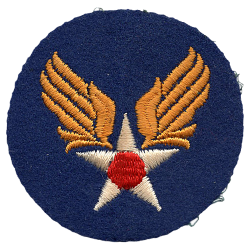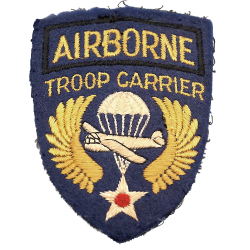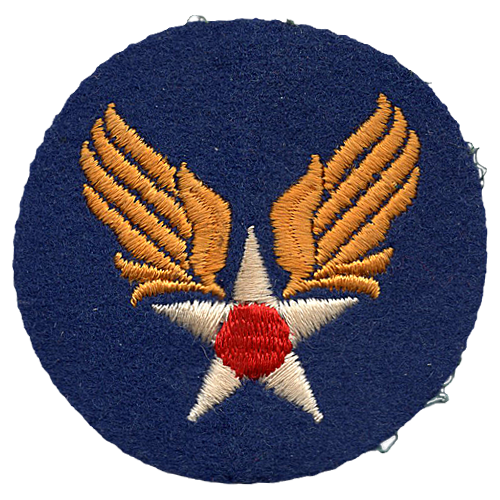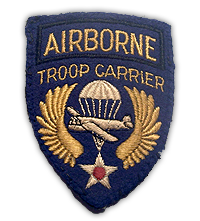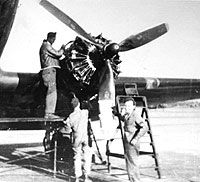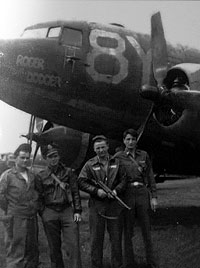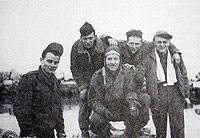A very exciting time for us all, we knew we about to make history – but would it be a good or a bad history? To see all these troopers lined up in that C47, had to make you wonder just what it would take to overpower them. Each one had strapped to him: a steel helmet, a weapon and ammunition, a main chute, a reserve chute, a shovel, a canteen of water, a bayonet, and many other essentials. They were awesome to behold. The delay because of the weather had not been good as it just gave them more time to think about what was ahead.
I was pretty well loaded also. I had the steel helmet, a belt with ammunition and a big 45 pistol. I also wore my primary chute and, by having to fly over the English channel, had to wear a May West of life preserver. Because the entire trip was over enemy territory, I had to wear my flak vest as well.
Once in formation the command headed for Flatbush, the point at which the friendly land of England would be left behind. As we hit Flatbush the planes dropped to 1.000 feet and kept descending until we were 500 feet above the water, hitting a steady 140 MPH indicated air speed in order to conform to the rigidly established time schedule. The closest following of designated paths, times and altitudes were important because of the necessity of fitting the airborne operation in with the entire invasion and because friendly gunners might fire upon planes which varied the pattern. The pilots were aware that the corridor – 10 miles wide, which would lead them across the Drop Zone (DZ) – was designed to skirt as far as possible the range of enemy anti-aircraft guns.
Four minutes after the formation passed Flatbush, navigation lights and cabin lamps were extinguished, and the planes flew on in the dark. Below in the Channel, a naval vessel called Gallup flashed it’s green lights, and the pilots knew they were on course. Of course the planners of the operation had known that the planes could not reach German held soil undetected. The giant ears of the German radar devices, were expected to pick up the intruders 10 to 15 minutes before we could make a landfall and track us in. In an effort to confuse these defenses, a diversionary force of the RAF Stirlings parted with the C47 formation to simulate an airborne attack closer to the base of the peninsula on it’s West Coast.
At Hoboken, identified by another ship’s flashing lights, the troop carrying planes swung to the left to cut across the peninsula to the DZ. The Stirlings went straight instead of making the turn and dropped large quantities of “window” strips of silver paper, which have the same effect on radar devices as do aircraft.
Colonel Krebs and his co-pilot Lt. Colonel Howard W. Cannon (then a major), saw the green light of Hoboken flashing it’s long-short-long-short. The right wing lifted up and the plane swung up to the left, with the others of the group still in formation behind it. They were climbing now nosing toward the 1500 feet at which we would enter the air over France. Intense light flak, which had come at us from the Channel Islands, became thicker now as we reached the mainland. The crew, most of us in combat for the first time, could see the balls of flame coming up with deceptive laziness. They didn’t look particularly dangerous until they began to strike and tear planes.
Without wavering however the 45 planes stuck to the course nosing down toward the 700 feet at which the jump would be made and slowing in the midst of that deadly fire to 125 miles an hour. By this time clouds were making it difficult to see landmarks, and locating the DZ was based largely on instrument skill. Pathfinder troops who had jumped shortly before had laid out a “T” of red lights to mark the location of the zone. Only a few of the pilots however were able to see and make use of this aid.
The land consisted of rolling fields half cultivated and half left to pasture separated by hedges or rows of trees. Just East of the Y of the Douve and Merderet rivers lay an oval shaped flooded area between a double track railway and the Carentan – Ste Mere Eglise highway. Drop Zone “D” the target for the 440th lay South West of Ste Mere Eglise near this flooded area and the highway.
In the planes the paratroopers were standing their chutes hooked up for the jump. The red light flashed in each cabin. It would only be a few minutes now. Tense and quiet the troopers waited. Pilots and crews were tense too. They were determined to put there fighting men where they were supposed to go. Suddenly the DZ was below us and the pilot ht the control which flashed the green light. That was the signal for the paratroopers to hit the silk and routinely the men stepped out of the door. They went out fast very fast but without disorder. One minute the plane was full of men the next it was empty.
My job now was to pull in all the shroud lines of all the troopers who had just left the plane. It was not an easy chore. Each chute had a canvas cover which stayed on the shroud and with the wind resistance of the now accelerating and turning plane the footing was treacherous. The lack of light in the cabin added difficulty to the job. It was at this point that I determined my five-foot-six-inches of height and weight of one-hundred-thirty pounds was a liability rather then an asset. I had always bragged about it when heavy work was involved and I was not called upon. This is what gained me the nickname “Little one”.
Charles Everett Bullard

